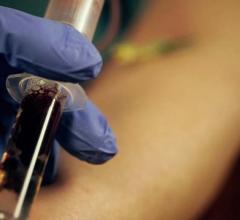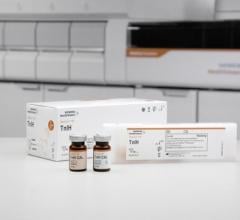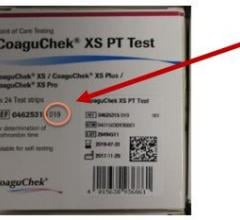November 17, 2009 – Scientists have created a one-step, point-of-care diagnostic test based on a silicon chip that uses a smaller blood sample, is significantly faster, portable and easier to use than current testing devices used to detect disease markers.
IBM said its new technology can test for many diseases, including cardiovascular disease. The company said the results are so quick and accurate that a patient’s serum or blood sample can be tested immediately following a myocardial infarction to enable the doctor to take a course of action and predict the patient’s survival rate.
As reported in Lab on a Chip, December 2009, Vol. 9, Issue 23, IBM Research-Zurich scientists Luc Gervais and Emmanuel Delamarche, in collaboration with the University Hospital of Basel in Switzerland, developed a new diagnostic test using capillary forces to analyze tiny samples of serum or blood for the presence of disease marker proteins. Capillary action is the tendency of a liquid to rise in narrow tubes or to be drawn into small openings.
IBM scientists have encoded the forces of capillary action on a microfluidic chip made of a silicon compound, similar to those used in computer chips, leveraging IBM’s experience in developing and manufacturing silicon semiconductor wafers. The chip, which measures 1 by 5 centimeters, contains sets of micrometer wide channels where the test sample flows through in approximately 15 seconds, several times faster then traditional tests. The filling speed can be adjusted to several minutes when the chip requires additional time to read a more complex disease marker.
The microfludic chip consists of a microscopic path for liquids with five innovative stages:
• Stage 1: A 1 microliter sample, 50 times smaller than a tear drop, is pipetted onto the chip, where the capillary forces begin to take effect.
• Stage 2: These forces push the sample through an intricate series of mesh structures, which prevent clogging and air bubbles from forming.
• Stage 3: The sample then passes in a region where microscopically small amounts of the detection antibody have been deposited. These antibodies have a fluorescent tag and similar to the antibodies within our body, they recognize the disease marker and attach to it within the sample. Only 70 picoliters (a volume 1 million times smaller than a tear) of these antibodies are used, making their dissolution in the passing sample extremely fast and efficient.
• Stage 4: The most critical stage is called the “reaction chamber” and it measures 30 micrometers in width and 20 micrometers in depth, roughly the diameter of a strand of human hair. Similar to a common pregnancy test, in this stage the disease marker that was previously tagged is captured on the surface of the chamber. By shining a focused beam of red light, the tagged disease markers can be viewed using a portable sensor device that contains a chip similar to those used by digital cameras, albeit this one being much more sensitive. Based on the amount of light detected, medical professionals can visually confirm the strength of the disease marker in the sample to determine the next course of treatment.
• Stage 5: Less a stage and more a part of the entire process is the capillary pump. The capillary pump, which has a depth of 180 micrometers, contains an intricate set of microstructures, the job of which is to pump the sample through the device for as long as needed and at a regular flow rate, just like the human heart. This pump makes the test accurate, portable and simple to use. IBM scientists have developed a library of capillary pumps so that tests needing a variety of sample volumes or test times can still be done without having to re-engineer the entire chip.
Due to its small size, the chip can be embedded in several types of form factors, depending on the application, including a credit card, a pen or something similar to a pregnancy test. Besides diagnosing diseases, the test is also flexible enough to test for chemical and bio hazards.
For more information: www.ibm.com, www.corisbio.com


 October 09, 2019
October 09, 2019 








